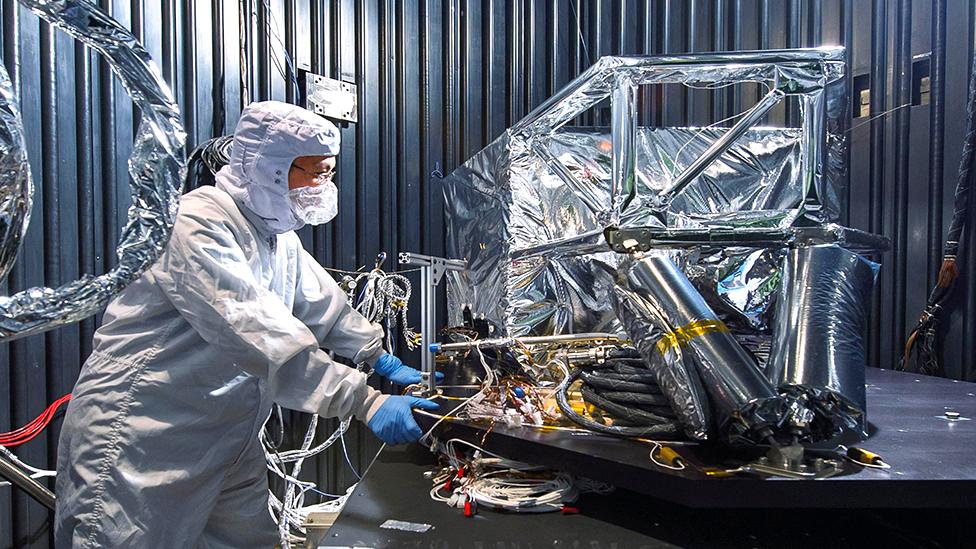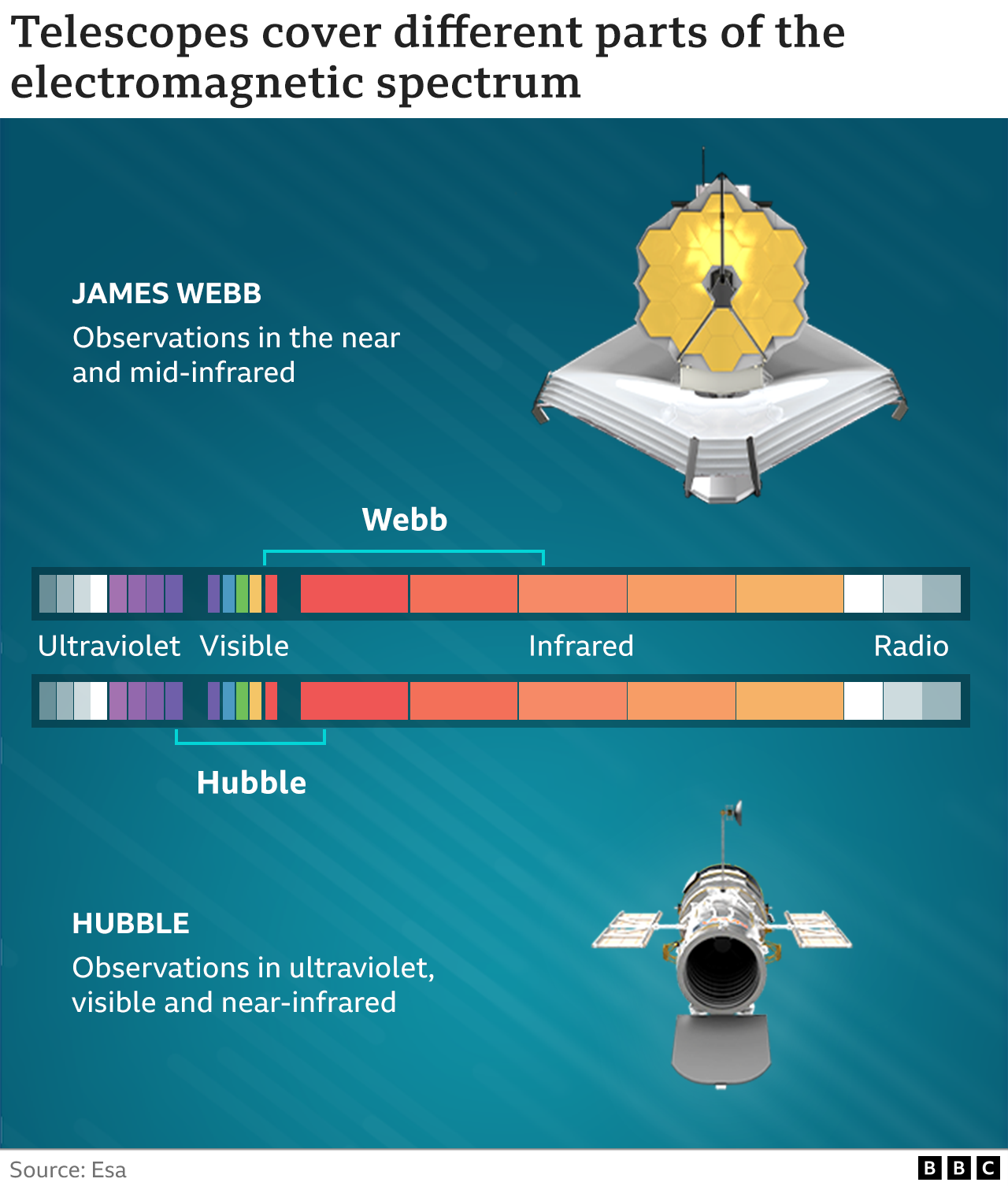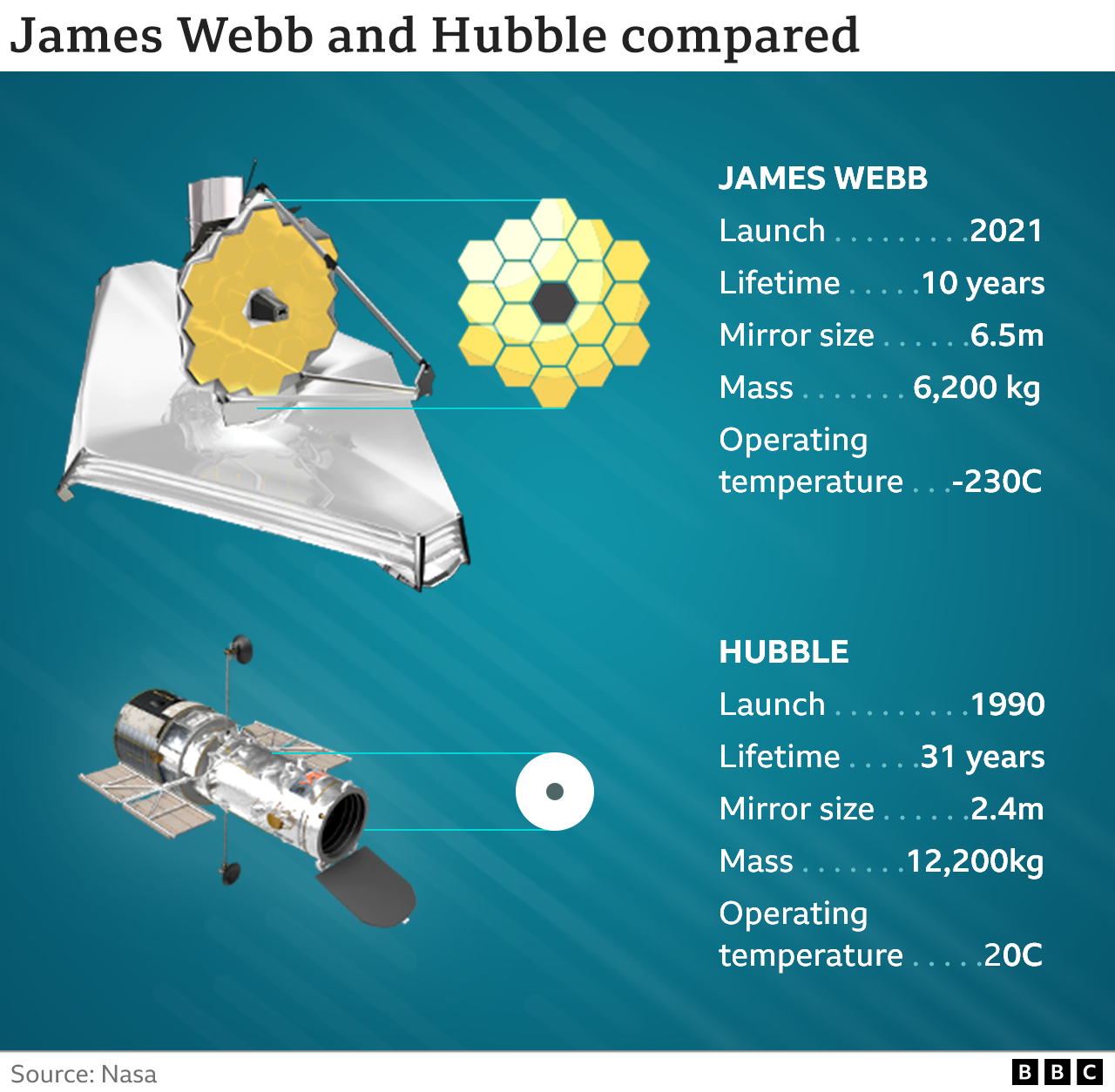James Webb telescope's MIRI instrument goes super-cold
- Published

Conceptual studies on what would become MIRI began in the late 1990s
It is perhaps the very definition of cool. The Mid-Infrared Instrument on the James Webb Space telescope is now at its super-low operating temperature.
The UK-assembled instrument has reached a decidedly chilly -267C, or just six degrees above "absolute zero".
This unimaginably low temperature is not far short of the point where all atoms are supposed to stop jiggling.
MIRI's frigid status will allow the Webb observatory to see the distant Universe in unprecedented detail.
The temperature milestone, confirmed by the US space agency Nasa on Wednesday, was hailed by the instrument's British co-principal investigator, Prof Gillian Wright.
"The cooldown process has been a validation of our thermal design," she told BBC News.
"When you plan these things, you always have contingencies. There are 'what ifs?'; how will you react if this happens or that happens? But it's been done in a single, straight shot. It's a really fantastic achievement."

MIRI is one of four instruments on Webb, which is the successor to the venerable Hubble Space Telescope and expected to be no less revolutionary.
A key difference, though, is that Webb will be tuned to see the Universe at longer wavelengths, in the infrared.
This means it must be protected from all heat sources, including its own hardware, which would otherwise glow in that same portion of the light spectrum it wants to detect.
To this end, Webb deployed a giant sunshield shortly after it was launched on 25 December.
This tennis court-sized membrane put all the important parts of the telescope in the shade.
Gillian Wright: "The technologies on James Webb took years to develop"
This was enough in the environment of space to passively cool three of the instruments on Webb to their target temperatures of just under -233C, or to use the more scientific temperature scale: 40 kelvin.
But this isn't nearly cold enough for MIRI, which will work with the longest infrared wavelengths in Webb's sensitivity range.
"Our detectors have to be at less than 7K, or they swamp themselves with what we call 'dark current'," said Prof Wright.
"If we're higher than this temperature the inherent motions of the atoms inside the detectors create a charge and that's what they would be measuring above 7K. The optics, or mirrors, inside MIRI need to be less than 12K," the director of the UK Astronomy Technology Centre in Edinburgh explained.

Achieving an even colder regime has required an active cooling unit, or cryo-cooler, developed and built by engineers at US aerospace manufacturer Northrop Grumman.
The unit is a network of pumps, valves and piping that drives helium gas at various pressures across the telescope to absorb excess heat inside MIRI and then dump it well away from the instrument.
With the operating temperature now achieved, the MIRI team can get on with preparing for observations.
This involves first ensuring the focusing of Webb's huge, 6.5m-wide mirror works for MIRI just as well as it does for the telescope's other instruments.
Then there is calibration work - confirming MIRI is delivering the data from its camera and spectrographs in a way that's expected and understood.
All this is likely to take a couple of months.

Filter wheel: Mechanisms inside MIRI will need to work for perhaps 20 years
MIRI's camera will eventually give us great vistas of the cosmos, much like Hubble has done; the spectrographs will reveal the chemistry, temperature, density and velocity of many of the objects in view.
James Webb has a number of goals that include searching for the very first stars to shine in the Universe and to study in detail the formation and evolution of galaxies.
MIRI will be involved in all of this.
Among its smart technologies are four coronagraphs. These are small discs placed across the field of view for use in high-contrast imaging. They will permit Webb to block out the glare of a star to study only its orbiting planets.
The coronagraphs are on a wheel of different imaging filters developed by the Max Planck Institute for Astronomy (MPIA) in Heidelberg, Germany.
This mechanism, like the detectors and optics in MIRI, will have to keep working in the super-cold conditions inside the instrument for what could be the next 20 years.
Your device may not support this visualisation
MIRI was produced in a partnership between a European consortium, led from the UK, and Nasa. Components were brought from all over Europe and America to be assembled and tested in the UK before being shipped to the US for integration into the telescope.
Conceptual studies on what would become MIRI began in the late 1990s. It's now almost ready to begin picturing and analysing the Universe.
